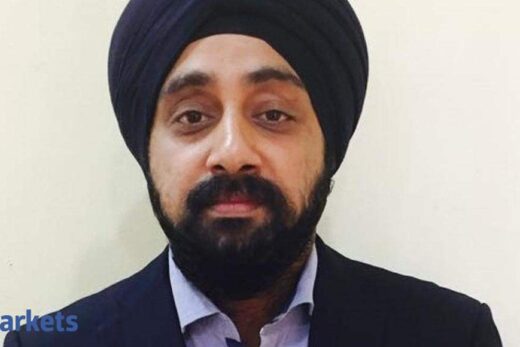How are you evaluating and assessing the asset quality? What are your expectations for the fiscal year going forward?
When we saw a strong revival in terms of consumer confidence, we positioned ourselves in a very advantageous position to capitalise on the sentiment. When it comes to sourcing, we clocked 9.5 lakh new accounts in Q2 which is more than 56% as compared to the previous quarter. Banca channel, whose contribution was slightly muted in Q1, improved on expected lines to the point where locations were also open. So both open market channel with a varied kind of strategy and Banca contributed in a big way to these 9.5 lakh new accounts.
When it comes to spends, we did well not only on a year-on-year basis, but also on a quarter-on- quarter basis. Both retail and corporate spends put together, we clocked 30% growth. Retail always has a lot of strategies in terms of growth and we are always ready with right offers, right merchant partnerships, etc. So this worked in our favour. Retail growth has been one of the highest in the company’s history. Corporate spends is again a good story. We continue to add new user cases in the B2B spending space that led to very handsome growth in the corporate spends, though here profitability is slightly lower compared to the retail spends.
Asset quality-wise it is a continuing good story with further decrease in RBI RE portfolio from 9% in September 20 — which was the highest — to 4% with a gradual runoff both on account of repayments as well as charge up and settlements. The asset quality improvement also helped us in lowering the provisioning requirement. So overall the profitability metric seems better. We feel like we have recorded a strong performance given the kind of macro environment prevailing in the economy.
Your cost of funds have gone up on a sequential basis. Do you expect this to stabilise and at what rates do you expect this to settle going forward?
Rama Mohan Rao Amara: You are right. It looks like it increased from 5.2% to 5.5% a 30 bps increase. Most of it can be attributed to the play of averages and different bases that were used. But when we look at it on a day to day basis, the funding cost remains the same as in June quarter. Presuming that the current conducive rate environment prevails in future, we do not foresee any increase in the funding cost going forward.
Why have your net NPAs and gross NPAs gone up sequentially and again on a year-on- year basis? It should be the other way round with Covid effect coming down?
The bump in GNPA was more than 7% last year. It was majorly on account of RBI RE which was Rs 2,700 crore at its peak in September 20, part of which became NPA over a period of time and that added to the NPA progressively. But as we started resolving them both through payments and through settlements, the charge came down from 9% to 4% as on date. So the portfolio is behaving normally and did not add to the problem. That is the reason why the gross NPA is trending downwards.
We have the ECL model which helps us in terms of having a base provision required in terms of stage 1, stage 2, stage 3 kind of category assets and we go by that ECL model which also tells us what will be the management overlay and what will be the overall provision coverage ratio. Because of some changes in the composition between stage 1, 2 and 3, the provision coverage ratio changed when the provision rates for each of those categories remained the same. That’s why net NPA increased by 3 bps sequentially. We hope that both GNPA and net NPA downward trend will continue as long as RBI RE comes down over a period of time.
In terms of any geographical strategy change post pandemic, are you looking at anything specific in terms of targeting the non-salaried class? Any specific focus in terms of growth?
For us more than 50% contribution in the new accounts comes from our partnership with SBI. We worked with their customer database under a programme called Shikhar where we pre-approved and pre-qualified the customers spread across different tiers from tier I to tier V. By applying certain filters and models, we arrived at the base, which can be targeted for customers. Here we have an advantage of auto debit and auto through which we can access the customers operating saving bank accounts for any potential recovery.
This brings in all kinds of segments. The self-employed segment is also there. New to credit kind of segment is there. New to credit card segment is also there. Other channels which contribute is the open market. Here also we use varied techniques. We use tele calling. We position our resources at partner stores. We have digital channels. We have digital partnerships with Paytm, Ola. This brings in a different segment of customers.
Overall, it creates a kind of stable portfolio both in terms of delinquency and contribution to the revenue. So we position ourselves. It is a constant evaluation of which segment will work for us and we have certain metrics which we track in terms of delinquency and collection effort. We calibrate our strategy in a very dynamic fashion.
Is there a specific geography? Are you going to get more into micro lending, smaller ticket items or for that matter the BNPL model as well?
We are looking more at customers in terms of what is the propensity for delinquency and what will be the contribution in terms of revenue and fee income. Based on that, different cut off strategies are adopted for different segments. It is not directly aligned to any particular geography as such. It is more looking at the customer profile. When it comes to the question of BNPL, credit card by very nature is like a BNPL where you can buy now and pay later; enjoy 20-52 days free credit period with an option of either availing the EMI loan either at the point of sale (POS) itself or post sale through different kind of EMI products.
But having said that, BNPL is a kind of segment to look at. Definitely a lot of action is happening, a lot of players are entering that space. It is mostly new to the credit kind of segment of customers with youngsters dominating. When this segment evolves, it can potentially add to our top of the funnel, helping us in terms of customer acquisition. We do not see it as a threat. Rather we look at it as an opportunity.
What is the competition from other fintech players looking like? Any other digital trends that you are catching up on?
We have a partnership with SBI. We do get customers through the Yono channel. We have special filters and some special kind of cut out strategy for getting those customers, mostly it is a digital journey which helps us in carding those customers in the quickest possible time where we understand the profile because we get a lot of relationship kind of information regarding those customers. But we have already been working with several fintechs.
Earlier we worked with Paytm and Ola via co-branded partnerships where we even looked at new to the credit kind of customers but understanding them, based on their transaction profile and consuming that kind of information in carding those customers. Similarly, in the payment space, we are already part of Google Pay where our credit card can be used for making their payments. So we continuously look for opportunities to engage with fintechs.
In recent times, there has been so many developments around the credit card businesses, whether it is Citi putting it up for sale, HDFC being allowed by the RBI to issue new cards. Competition is intensifying. How are you planning to tackle all of that?
We always maintain that we have our own internal strategy more aligned to our risk appetite, based on the customer segments where we are comfortable and not necessarily based on the competition or presence or absence of competition. We always aspire for using the best utilisation of the capacity. We definitely aspire to card 10,000 new accounts a day which we were able to maintain throughout the September quarter.
Even in September, we were able to maintain new account sourcing despite the largest player coming back. So our strategies are more in terms of how to work with existing customers, how to make them active, how to make offers which are relevant to them and to convey those offers in a timely manner. This is a journey. Our strategy needn’t be aligned to competition strategy. We always aim for sustainable growth which we are able to see for the last couple of quarters.



